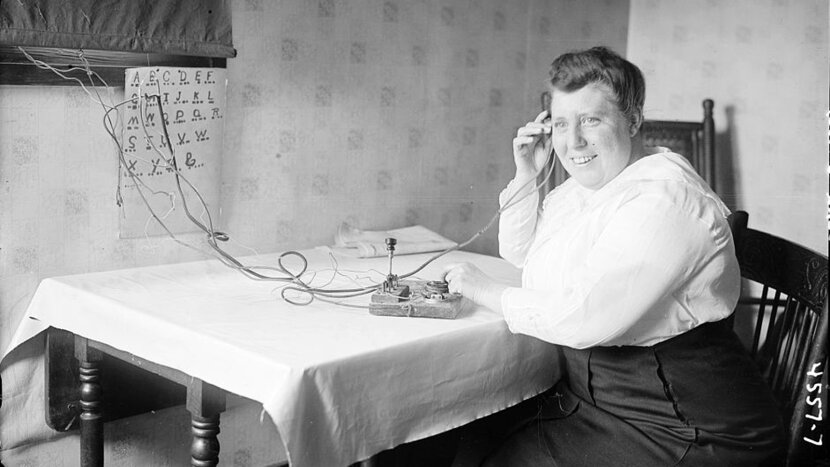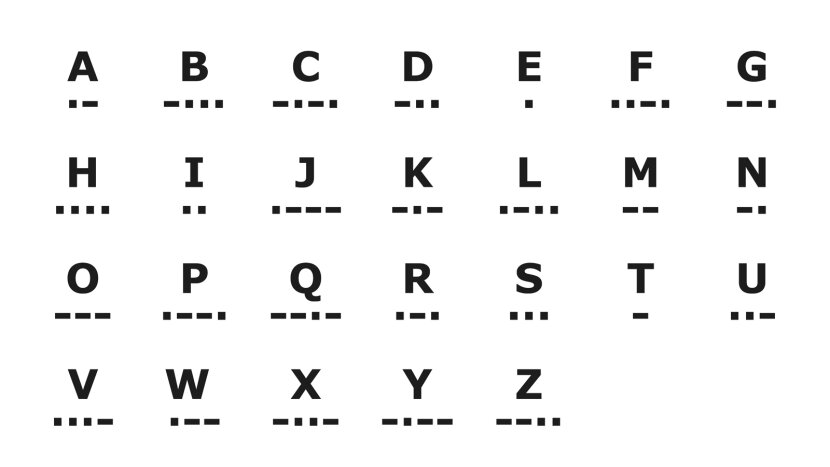He was a successful businessman and a presidential portraitist. But above all else, Samuel F. B. Morse is best remembered for his eponymous Morse code, an elegant system that revolutionized communications back in the 1800s.
Even in the heyday of Silicon Valley and social media, there's still a place for the well-worn code. (Just ask the U.S. Navy. It's just one language cryptologic technicians learn while training at the Center for Information Dominance at Corry Station in Pensacola, Florida.) As the forerunner to email, texts and other near-instant messaging mediums, we think Morse code deserves a tip of the hat.
Who Was Samuel Morse?
Parts of Samuel Morse's backstory read like a tragic Hollywood screenplay. He was born in Charlestown, Massachusetts on April 27, 1791. A professional painter, Morse found himself working on a portrait of the Marquis de Lafayette in 1825. The job had taken him to Washington, D.C. where he received a devastating letter. According to the dispatch, his young wife had died back at their home in New Haven, Connecticut.
Worse, by the time Morse got this message, it was too late for him to return in time for her funeral. She was laid to rest without him.
Such was the pace of most long-distance communications in those days. Morse was one of the entrepreneurs leading the way.
He was one of the developers of the first telegraphs built in the 1830s. To call any lone scientist or inventor the "father" of this technical breakthrough would be misleading. Morse was just one of the visionaries behind the telegraph's early development.
Despite his limited scientific background, Morse had a real passion for electricity. In 1837, he showcased a prototypical telegraph that he'd built at a public demonstration. Like all telegraphs, his sent out pulses of electric current via wire. The pulses would make their way into a receiver — and this is where Samuel Morse's famous code came into play.
The First Morse Code Transmission
Morse's telegraph couldn't transmit voices or written characters. Yet by capitalizing on those electric pulses, he devised a new way to send coded messages.
Documents show that the original Morse code was Morse's brainchild — despite rumors to the contrary. That said, he had a brilliant partner by the name of Alfred Vail, who helped him refine and expand the system. Under the code, every letter in the English language — along with most punctuation marks and each number from zero through nine — was given a unique, corresponding set of short and long pulses.
"Long" pulses came to be known as "dashes" while the short ones were called "dots." In this iteration of the code, not all dashes were created equal; some lasted longer than others. And the spaces between pulses varied widely (depending on the context).
Soon enough, Morse got to show off his electric cipher. In 1843, Congress handed him a $30,000 grant to build an experimental long-distance telegraph between Washington, D.C. and Baltimore, Maryland.
The moment of truth came on May 24, 1844. Sitting in the U.S. Capitol's Supreme Court chamber, Morse sent a coded message along to Vail, who was waiting in Baltimore at the other end of the line.
Morse knew just what to say. At the suggestion of a friend's daughter, he transmitted a quote from the biblical book of Numbers: "What hath God wrought."

Morse Code Goes Global
Long-distance telegraph lines spread like wildfire over the next few decades. So did Samuel Morse's code. During the Civil War, President Abraham Lincoln used it to keep abreast of battlefield developments. And speaking of Honest Abe, when Western Union completed the first transcontinental telegraph line in 1861, Lincoln received its first message — a dispatch sent all the way from San Francisco to D.C.
But as Morse code took hold in other countries, problems emerged. To address these, German telegraph inspector Friedrich Clemens Gerke simplified the system in 1848. Among other changes, he did away with the extra-long dashes and revised many of the individual number and letter codes.
After some additional tweaks were made, this new edition was dubbed "International Morse Code." Meanwhile, the original version was retroactively labeled "American Morse Code." Outside Civil War reenactments, the latter is all but extinct today.
Yet, International Morse code was in for a bright future.
Learning the Basics of Morse Code
In the international code, a "dash" is three times longer than a "dot." On paper, "-" is the symbol for a dash while every "." represents a dot. "E" is a simple letter; it consists of just one "." Other characters are a bit more intricate. For example, "-.-." means "C."
If you're dealing with a letter that features multiple dots and/or dashes, there should be a pause equivalent to the length of one dot in between those components. The pauses that separate entire letters are longer, equal to three dots. And individual words should be divided by even longer pauses measuring seven dots long.
No Morse code phrase is more iconic than "SOS." A universally recognized distress signal, SOS was first adopted as such by German telegraphers in the year 1905. Why'd they pick this letter combo? Because in International Morse Code, "S" is three dots and "O" is three dashes. See, "dot-dot-dot-dash-dash-dash-dot-dot-dot" (...---...) is an easy sequence to remember — even when you're in grave peril.

Applications Past and Present
Although it was explicitly designed for the telegraph, people found other ways to utilize Morse Code. With the dawn of radiotelegraph machines in the 1890s, coded messages could travel via radio waves. Likewise, some purely visual media have long histories with International Morse Code. Beginning in 1867, ships began using onboard blinker lights to flash signals at each other.
Then there's the case of Jeremiah Denton, Jr. An American navy pilot (and future senator), he was captured during the Vietnam War. In a forced appearance on North Vietnamese television, Denton was coerced into saying that his captors were treating him well behind enemy lines. But his eyes told a different story. By blinking in sequence, he used Morse code to spell out the word "torture."
Later in the 20th century, the code was largely phased out. The U.S. Coast Guard hasn't used it in an official capacity since 1995 and modern ships are far more reliant on satellite communications systems. However, Uncle Sam's Navy is still training intelligence specialists to master the code.
Another group that's showing it some love is the International Morse Code Preservation Society — a coalition of amateur radio operators with thousands of members around the globe. So while the golden age of dots and dashes may be over, Morse code's still hanging in there. No distress signal required.
At Boston's Fenway Park, there are two barely-noticeable sets of dots and dashes painted on the left field scoreboard. In Morse code, these spell out the initials of former Red Sox owner Tom Yawkey — and those of his wife, Jean.
